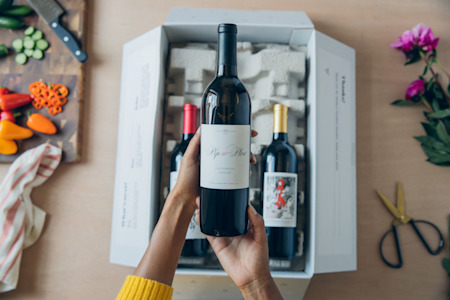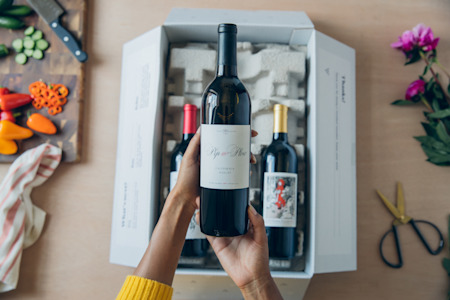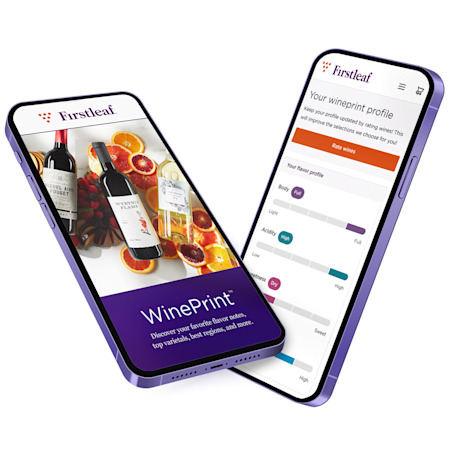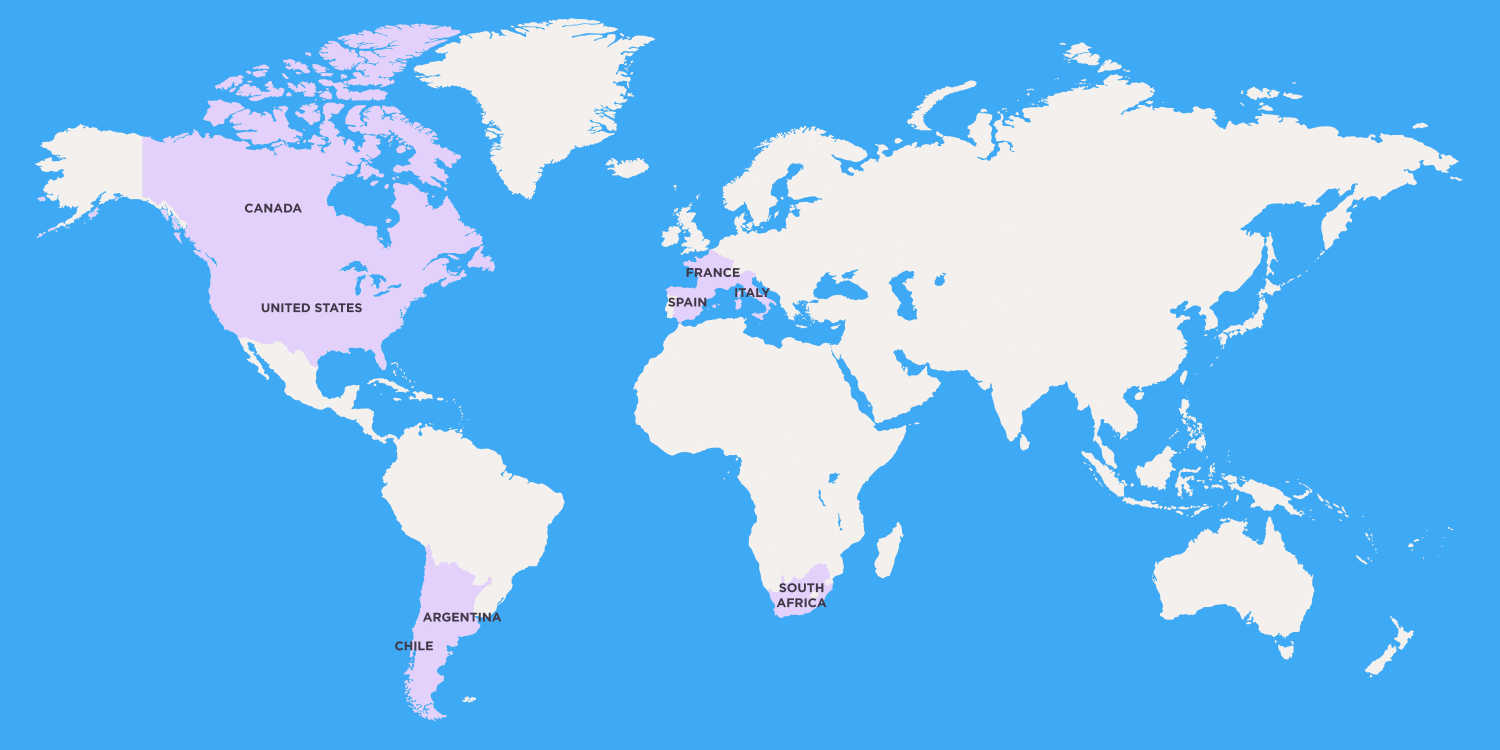Cabernet Franc
Explore our ultimate guide to the complex Cabernet Franc
When most people think of drinking "Cabernet", it's Cabernet Sauvignon (often referred to as King Cab), but what they are missing is the stunningly complex, original Cabernet grape: Cabernet Franc.
Cabernet Franc is one of the world's great black wine grapes, and is used as a major component of Bordeaux blends, but is also made into single varietal wines in Chinon, California, and Canada (for ice wine).
The grape is a natural counter to Cabernet Sauvignon in blends and often exhibits notes of earth, tobacco, green pepper, raspberry, and violets.

Take Our Quiz Today
Get award-winning delicious wines from all over the world shipped straight to your door. Take the quiz to get the perfect pairings for your holiday season.
Take The Quiz TodayIN THIS ARTICLE:
History of Cabernet Franc
Many people forget than Cabernet Sauvignon is a relatively recent grape variety—it resulted from the chance crossing of Cabernet Franc and Sauvignon Blanc vines sometime in the 17th century. What we do know is that Cabernet Franc is ancient, and has shaped the history of some of the world's greatest wine regions and the flavors of the greatest wines.
There are competing narratives for the origins of the grape, and even today it's still a mystery. It's possible that it came from Brittany, but equally as likely that it came from the Basque country.
Either way in the 17th century Cardinal Richelieu had the vine classified and installed at the Bourgueil Abbey in the Loire Valley in the care of Abbot Breton. From there the grape spread across France and on to the rest of the world. Today it is grown in wine regions across the globe.
What's in a name?
In the Loire Valley, the grape is sometimes called "Breton" in reference to the 17th century Abbot who first cultivated the grape for Cardinal Richelieu. The grape is also sometimes referred to as Bouchet, but this can get confusing. In the Gironde Bouchet is used to refer to Cabernet Sauvignon, whereas in St-Émilion and Pomerol it refers to Cabernet Franc.
What does Cabernet Franc taste like?
Cabernet Franc offers a great balance to the big fruit flavors of Cabernet Sauvignon, which is why it is so often found in Bordeaux style blends.
It's herbaceous, earthy, and features light red fruit. When it is picked too early it can share some of the same phenolic issues as Cabernet Sauvignon and have a strong vegetal taste, which is often described as "green bell pepper."
Other notes that can come through in Cabernet Franc wines is blackberry, blackcurrant, tobacco, raspberry, and violets. The grape shows distinct notes of terroir and in the best examples showcases minerality and even graphite.
Cabernet Franc Characteristics
Considered a "black" grape, it is still lighter and brighter in color than Cabernet Sauvignon and produces a pale red wine. The berries are small with thick skins that help lead to a beautifully textured wine that showcases the natural tannins as long as it is not over-oaked in the winemaking process.
While it is soil sensitive and thrives in warm sites, it ripens more readily in cool climates than Cabernet Sauvignon, and can handle variant humidities. This is why they are often blended together in Bordeaux.
Well grown Cabernet Franc grapes create wines that have rich acidity, ripe sweetness, and a smooth texture.
Fun Fact
While this Cabernet Franc berry is visually a red grape, it is referred to as "black".
Cabernet Franc Nutritional Facts
The nutritional value in Cabernet Franc varies greatly depending on two main factors: alcohol and sugar.
The alcohol in Cabernet Franc varies depending on how ripe the grapes were when harvested, if the winemaker added extra sugar, and how long it was allowed to ferment. Cabernet Franc wines are generally in the middle range for all of these categories.
The more sugar present in a wine, the more carbohydrates. Sweetness in wine is very specifically defined.
How to Serve and Store Cabernet Franc
The most tannic, well-oaked, and well-made wines from the best vintages can age for decades, but like most other wines the majority of Cabernet Franc wines are meant to be enjoyed fresh and are not meant to be aged for long periods of time.
Serving Cabernet Franc can be done simply. The wine should start slightly lower than room temperature, but it can be served with some warmth, but this is all personal preference. Enjoy your wine how you like it.
To open you will need a traditional corkscrew.
If you are storing Cabernet Franc, it should be in a cool place that does not receive direct sunlight, and preferably in a wine refrigerator or cellar. 55 degrees Fahrenheit is the median temperature wine should be stored if you wish to age the bottles. What matters most is consistency. Do not store your Cabernet Franc in a place that receives direct sunlight, heat, or too much humidity and remember to enjoy it while it's fresh.
What to Pair with Cabernet Franc
Pairing wine has some general rules, but we think the most important rule is to drink Cabernet Franc with the food you like. Cabernet Franc is a good choice for rich foods. Game meats, barbecued red meats, and complex meat-heavy stews are good pairings.
Cabernet Franc Wine Regions Around the World
Cabernet Franc is truly an international grape and grows all over the winemaking world. The styles vary greatly by region and by the producer.
United States:
Cabernet Franc came to the United States when California winemakers (mostly in the Napa Valley and Sonoma) wanted to make Bordeaux-style blends. You can find single varietal wines, but often it is blended with Cabernet Sauvignon and Merlot.
It is also found growing in Washington State as well as on Long Island in New York. Interesting Cabernet Franc ice wines are made in the Finger Lakes region of upstate New York.
Fun Fact
The grape's natural ability to withstand ranges in humidity means that you can find good examples of Cabernet Franc growing in regions like Virginia or Long Island.
France:
In its first documented home (the Loire Valley) Cabernet Franc is planted in Anjou, Bourgueil, Chinon, Touraine, and Saumur-Champigny (which is known for making single varietal wines from Cabernet Franc)
In Bordeaux, it is primarily grown in the cooler climates of the right bank (Saint-Émilion and Pomerol among others) where it is used as a blending grape. It also grows on the left bank in Medoc.
Italy:
In Friuli, Cabernet Franc was at one time confused with Carmenère, thankfully it was worked out and today is used to make delicious red wines. In Tuscany, particularly in the Bolgheri appellation, it is blended with Sangiovese (among other varietals) to make the famous Super Tuscan blend.
Cabernet Franc growing elsewhere:
Cabernet Franc is also on the rise in Spain, South Africa, Chile, and New Zealand, but has found particular success in the Mendoza region of Argentina, and in Ontario, Canada where it is used to make ice wine.

Take The Quiz
Learning about different wine varietals and regions is fun. Take the quiz now to explore wines matched to your unique palate.
Take The QuizIN THIS ARTICLE

WinePrint™ by Firstleaf
Are you looking to learn more about your wine preferences? Check out our Wine Print for an in-depth look at your personal tasting profile. Discover your favorite wines, varietals, regions, and tasting notes and get personalized recommendations wherever you are.
Learn More
